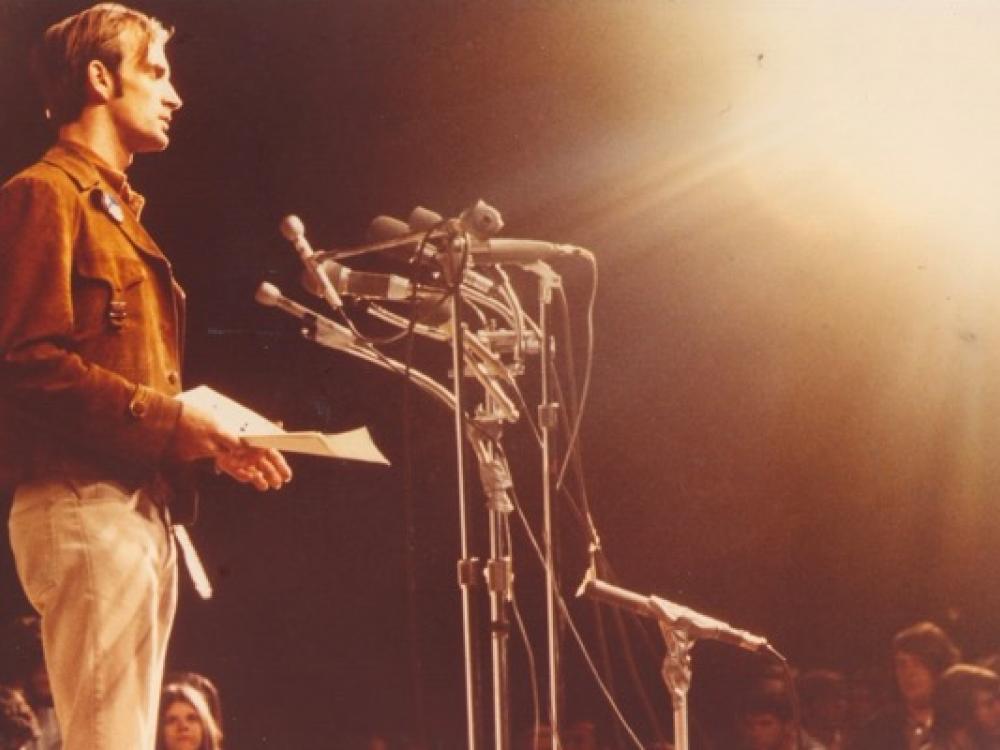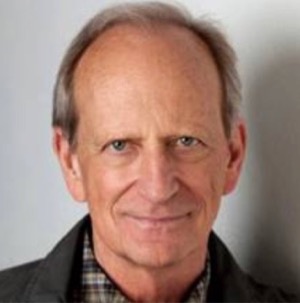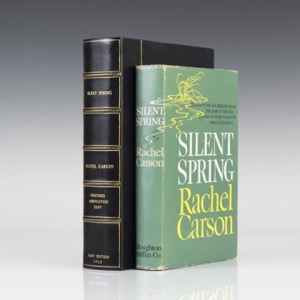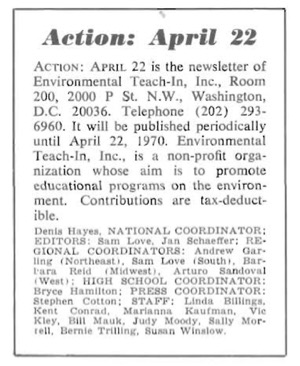
Organizer Denis Hayes speaks at the first Earth Day. Courtesy of Denis Hayes. See more photos from the first Earth Day, courtesy of PennLive.com.
April 20, 2020
In the spring of 1970, my father got a new job in Texas and soon afterwards, my parents, four siblings and I packed up the Ford station wagon and headed south, leaving our home in Indiana for a new life. I was 8 years old and already quite an environmentalist, though I didn’t even know what the word meant at the time.
That same spring, a 25-year-old Denis Hayes dropped out of Harvard to work for Senator Gaylord Nelson who had an idea to create an Earth Day.
 Denis Hayes, courtesy of Earth Day Network.
Denis Hayes, courtesy of Earth Day Network.
Can you imagine what it must have been like, in 1970, as a young college student to help launch a movement that would last into the next century and beyond? A movement that would galvanize fragmented environmental groups who were fighting issues ranging from lead paint in low-income housing to saving the whales to create a day that would have the potential to save this planet from ourselves. Denis Hayes was that student. Earth Day was the movement. This week, we celebrate its 50th Anniversary. (See my interview with Hayes below.)
In the spring of 1970, Denis Hayes was in graduate studies at Harvard and was recruited by Senator Gaylord Nelson of Wisconsin to help create Earth Day, along with Nelson’s co-chair, Representative Pete McCloskey, who was also very conservation minded (he later co-authored Endangered Species Act). Though Nelson was a Democrat and McCloskey a Republican, they formed a bipartisan coalition that broke through party barriers, encouraging many others in Congress to follow suit.
Watch Denis Hayes talk about the challenges of organizing a nationwide event in 1970. Courtesy of Bullitt Foundation.
Senator Nelson had been involved in environmental issues for many years, even while serving as Governor of Wisconsin. When he was elected to Congress, he continued to push for ecological projects and even worked with President Kennedy to bring more attention to these issues. Nelson felt, as many did, that the country was ripe to embrace a message of environmental activism.
Since the 1950s, the environment had taken a backseat to prosperity and progress. Most people did not know or care that we were destroying our forests, polluting our rivers, contaminating birds and other wildlife and literally poisoning the planet. The phrase "Better Living Through Chemistry" was drummed into a willing public who were led to believe that spraying bug killer on your yard was more important than whether hawks flew over the Appalacians.
 Silent Spring, first edition, courtesy of Raptis Rare Books.
Silent Spring, first edition, courtesy of Raptis Rare Books.
In 1962, Rachel Carson’s seminal bestseller, Silent Spring, sounded an alarm and people finally began to listen. A plethora of environmental nightmares hit the news such as a spontaneous fire in the filthy Cuyahoga River in Cleveland, Ohio and a massive oil spill in Santa Barbara, California, which had been one of the most pristine shorelines in the world. For many, enough was enough.
As Stewart Brand, founder of The Whole Earth Catalog in 1968, said about our planet, “This is all we've got and we've got to make it work. There's no backup.”
Inspired by these events, Senator Nelson proposed a “national teach-in for the environment.” He chose April 22 because it was between spring break and final exams for most high school and college students.
Senator Nelson designated young Mr. Hayes as his National Coordinator (after which Hayes dropped out of Harvard), and they went to work.
Garnering support from organizers in various areas of the country as well as thousands of mostly young, married women volunteers, they spoke to civic and community groups and partnered with news outlets to help spread the word. Senator Nelson donated $12,000 of his own money to fund initial publicity, raising other funds to help along the way and received assistance from various groups including the United Auto Workers who paid for printing and mailing out over 60,000 newsletters.
 See one of the 1970 newsletter ads sent out by Senator Nelson and Denis Hayes. Courtesy of the Wisconsin Historical Society.
See one of the 1970 newsletter ads sent out by Senator Nelson and Denis Hayes. Courtesy of the Wisconsin Historical Society.
By April 22, the grassroots movement that became the first Earth Day drew over 20 million people into the streets, flowing into parks, and participating in classrooms. Earth Day was more than a protest it was a way to show everyone how to live a life in harmony with the planet. All over the country, people gathered, drawn together by a love of Mother Earth tapping into a nerve that was shared by young and old.
After 1970, Senator Nelson stayed active for many years. Upon leaving Congress in 1981, he served on the board of The Wilderness Society and then received the Presidential Medal of Freedom in 1995. He continued to advocate for environmental issues until his death in 2005 at the age of 89.
Denis Hayes moved on to serve as a solar energy consultant with President Carter after which he received his law degree from Stanford. He spent his career working for environmental issues both nationally and near his home in the Pacific Northwest. He has received countless awards including from the Sierra Club, The Humane Society and the National Wildlife Federation and was named Hero of the Planet by Time magazine in 1999. His boyhood hometown of Camas, Washington, named the Hayes Freedom High School in his honor. He was also featured in the 2009 documentary film Earth Days on PBS which is well worth watching here for free.
Hayes now serves as the president for the Bullitt Foundation in Seattle, helping to promote green construction techniques around the world. The foundation’s headquarters is touted as “The Greenest Commercial Building in the World.” Click here to find out more about The Bullitt Center.
Hayes and his wife, Gail Boyer Hayes (an environmental attorney), are co-authors of Cowed: The Hidden Impact of 93 Million Cows on America’s Health, Economy, Politics, Culture and Environment. They have one daughter, Lisa, who is also an attorney.
We caught up with Hayes as he looked back over 50 years of memories and he was kind enough to answer a few questions for Green Source DFW:
GSDFW: What changes have you seen in the country since you led the first Earth Day in 1970?
DENIS HAYES: The air in Pittsburgh and Los Angeles in 1970 was like the air today in New Delhi and Sao Paulo. Breathing was the equivalent of smoking two packs of cigarettes a day. The Cuyahoga River kept catching on fire. The bald eagle was on the ever-expanding list of endangered species. Lots of paint had lead in it, that poor kids peeled off walls and ate, permanently damaging their brains and nervous systems.The breadth of improved conditions is sort of staggering.
GSDFW: Do you see the recent push at going green as a legitimate movement or a passing trend?
DENIS HAYES: That was the constant question back in 1970. Is this environment stuff just a passing fad? I think we have answered that pretty definitively. Environmental laws governing air and water pollution, toxic substances, endangered species, occupational health, public lands and wilderness protection, marine protected areas, etc have had sweeping effects in making America a far healthier, more beautiful, more resilient land. Similarly, with the new student climate strikes; the proponents of the Green New Deal; and groups worried about pandemics rooted in zoonotic diseases and antibiotic-resistant bacteria, endocrine disrupting chemicals, plastic pollutants, etc are the next wave setting out to address the next generation of problems. They are fighting for their futures, and they aren’t going away.
GSDFW: Currently, what do you think is the most pressing environmental issue facing our country, our world?
DENIS HAYES: In our globally interdependent world, the key issues are the same. At the top of my list are the climate emergency and the proliferation of nuclear weapons. All your readers know what’s happening to the climate, and why, and what we should be doing instead. But nuclear weapons have fallen off the radar screen. Yet a full-scale thermonuclear exchange, either because both the super-powers were headed by delusional egomaniacs, or because of a technical glitch, could swiftly spell the end of most advanced lifeforms on the planet. Even a regional exchange of the nuclear arsenals of India and Pakistan could produce two or three years of nuclear winter, drastically reducing agricultural yields to the point where mass starvation would be unavoidable. When I was young, I genuinely thought we would have banned all nuclear weapons by now.
GSDFW: How do you feel the current administration is handling our environmental issues?
DENIS HAYES: Donald Trump is the most rabidly anti-environmental President in the nation’s history. Globally, he is in the same league as Attila the Hun. He is attempting to roll back or rescind more than 100 environmental laws, regulations, and judicial decisions, essentially undoing all the environmental progress of the last 50 years. He also is attempting to withdraw from, or else simply ignore, all of our international environmental treaties. I once thought that James Watt and Ann Gorsuch were as bad as it could get. But Trump is in a whole different league.
GSDFW: From an environmental perspective, how has today’s America improved from the America of 1970?
DENIS HAYES: The average car today produces about three percent as much smog-causing pollution as the average car in 1970. We no longer have power plants belching out uncontrolled smoke in the middle of our cities. The bird population collapse was reversed, and “Silent Spring” was averted. If you want to buy organic local food today, it is abundant. Refrigerators today use less than a quarter as much electricity as in 1970, but keep your food just as cold and come in the same decorator colors. Electric automobiles no longer look and perform like golf carts. Americans today can swim and fish in rivers and lakes that they needed to keep this distance from in 1970.
GSDFW: How do you think 2050 will look?
DENIS HAYES: I don’t have a crystal ball. You can only spell out your assumptions and say, if we do A and B, C will happen. The qualifications are forgotten. I was recently challenged after a talk by someone who criticized me for praising Rachel Carson. He said she was "an ignorant scare monger.” I replied, “Did you notice that Bill Ruckelshaus banned DDT back in 1972. Carson warned what would happen if DDT were not banned! Silent Spring was the mirror image of a self-fulfilling hypothesis. It was a self-undoing hypothesis. Will we reelect Trump, or will a new President and a new Senate enact a Green New Deal? Will the next ten years resemble the environmental golden age of the 1970s or the dark years of the 1980s? The implications for 2050 are the difference between catastrophe and a healthy, resilient, beautiful, equitable future.
GSDFW: In 1999, Time Magazine named you, Hero of the Planet. Who are some of your heroes in the environmental movement today?
DENIS HAYES: Jay Inslee, Washington Governor who ran for President knowing he did not have the money and name recognition to win, but with a commitment to making climate change a relevant issue in the 2020 campaign.
Ed Markey, Senator from Massachusetts, co-author and co-sponsor of the Green New Deal, who has been on the correct side of every single environmental issue for the last four decades.
Bill McKibben, brilliant author and environmental activist.
Katharine Hayhoe, an atmospheric scientist and professor of political science at Texas Tech University, where she is director of the Climate Science Center and IPCC stalwart who communicates respectfully and persuasively with the evangelical right.
The student climate strikers around the world, begging adults to act to protect their future.
GSDFW: You are a major supporter of solar energy. Do you feel that the industry has progressed over the last 50 years?
DENIS HAYES: Thanks mostly to the stimulus provided by the German feed-in tariff and the giant volume of low-cost modules produced by the Chinese, solar technology in much of the world is cheaper than simply buying the fuel for coal-fired power plants. The distributed solar revolution is now inevitable. Utility resistance to change and governmental regulatory inertia are still retarding it, as are some people who have learned nothing in the last 25 years who call coal beautiful and think solar is a toy.
Back when I headed the federal Solar Energy Research Institute, solar cost $50 per watt, and we had a strategy to drive it down to $0.50 per watt and capture a huge global market for America. Then Reagan terminated the program. Now years later, in bulk, solar modules can cost as little as $0.20/watt, and they all employ technologies developed in the United States. But today, American manufacturers are barely even in the game; even American solar companies mostly manufacture abroad.
GSDFW: If you were to offer our readers one thing to change in their own lives to help the environment, what would that be?
DENIS HAYES: Have just one child, and persuade your child to have just one child, too.
The earth does not have an unlimited carrying capacity. And when a species overshoots its carrying capacity, eventually it will collapse. Disease, war, starvation, ecological catastrophe. . . . something will pull it down.
If we hope eventually to have everyone on Earth enjoy a lifestyle equal to the average Scandinavian, and if we want to protect some reasonable amount of the rest of nature from human development, we already have twice as many people as can be supported indefinitely. If we aimed for an American lifestyle, we’ve already overshot the planet's limits four-fold. If we would all be happy in perpetuity at the lifestyle of an Indian peasant, we could probably double our current population. But even Indian peasants don’t want to remain Indian peasants.
When I was born, the world had about 2.3 billion people. Today, it has 7.8 billion. It has more than tripled in my lifetime.
Homo sapiens, by mass, currently weigh twice as much as all wild terrestrial vertebrates, all the elephants, zebras, elk, bison, wildebeests, lions, tigers, kangaroos, bears, wolves, cougars . . . all wildlife. If we add all our domesticated animals - mostly cows, hogs, and other food - to our weight, we and our food weigh eight times as much as all wildlife. We are crowding the rest of life into extinction.
I like people. Hell, I even married one! But we have too many.
GSDFW: Thank-you so much for visiting with us and our readers!
DENIS HAYES: Thanks.
See more of our 50th Anniversary of Earth Day coverage.
Stay up to date on everything green in North Texas, including the latest news and events! Sign up for the weekly Green Source DFW Newsletter! Follow us on Facebook and Twitter. Also check out our new podcast The Texas Green Report, available on your favorite podcast app.









